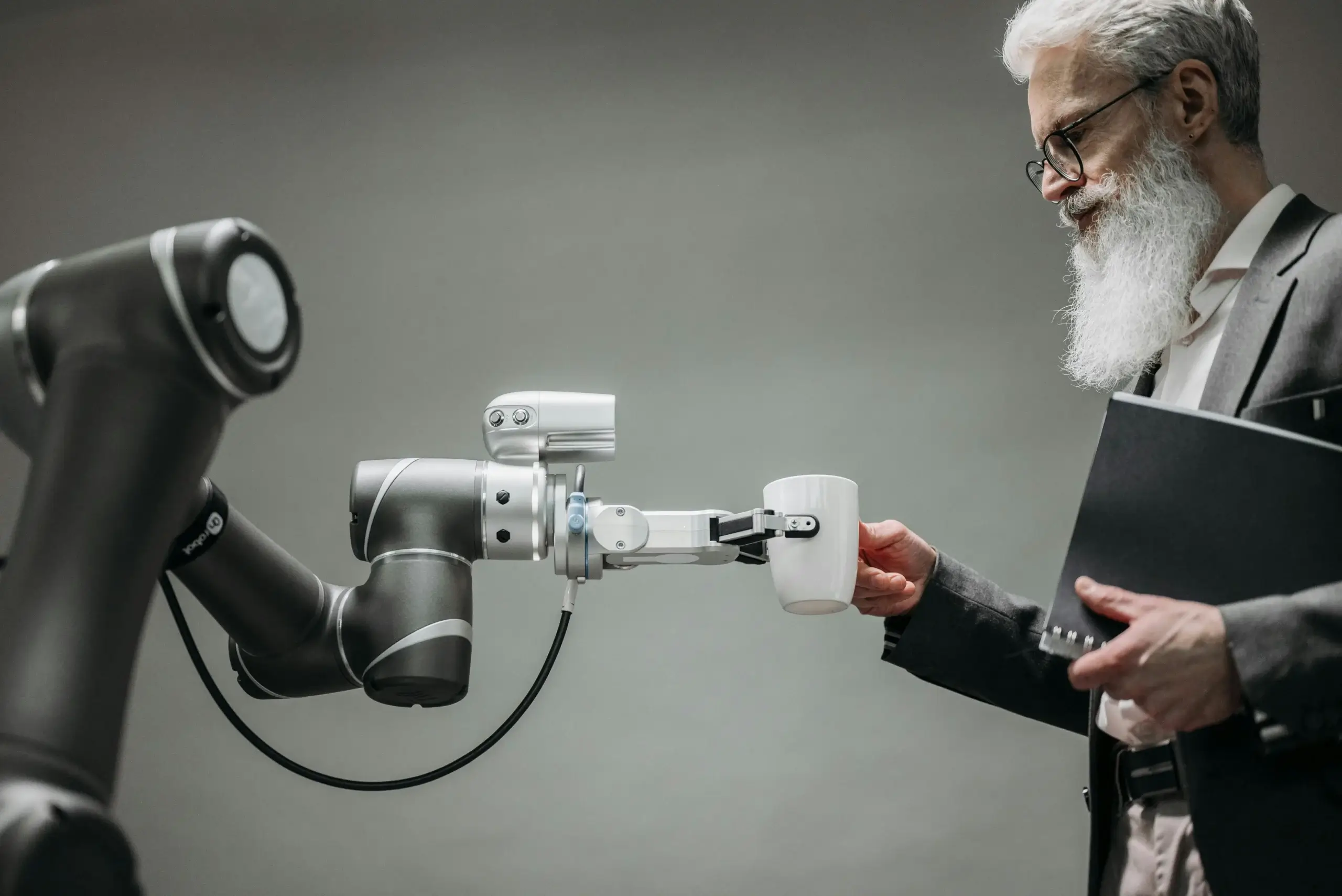AI stands to be a gamechanger for learners globally. It offers immense potential to transform how we learn and teach. In this article, we will be looking at how AI is changing the way we teach and learn and what you should know to prepare yourself for the future.
The Transformative Potential of AI in Education
For educators and educational business owners, knowing what AI offers and how to use it, will be key to staying competitive. Additionally, with eLearning potential, AI in teaching and learning could be the way we bring more learners globally into the educational system.
AI use in education has two key benefits. It can increase efficacy and it can make learning more personal. Bypassing the traditional “one-size-fits-all” approach to focus on custom learning experiences for each student is a massive leap in how we think about learning! But let’s look more closely at everything AI in education can offer.
Personalized Learning
If you fire up your Netflix (or favorite streaming platform) right now, what do you see? Whatever your content suggestions are, they won’t be the same as your neighbour or loved ones. What you’re seeing is AI algorithms in action. Your recommendations are personalized to you, based on what you’ve watched before, how long you watched it and your other search history.
Now take that core idea and apply it to AI use in education. AI in teaching and learning can suggest learning materials and formats based on how each student best accesses it. Students who struggle with math, but excel in visual learning, for example, may see more graphs and pictures to explain complex problems. Your math whizz, meanwhile, can be guided to more numeric explanations. Both students can then learn their way, not just any way.
Smart Tutoring
Every keen learner wishes they had a patient teacher available on call. With AI used in education, they effectively do! AI-powered tutoring systems can:
- Answer student questions right away
- Explain topics in different ways until the student understands
- Identify where students are having trouble
- Provide extra practice in weak areas
This could be particularly useful for learners in remote areas without easy access to instructors. It could also be a gamechanger for adult learners who need to study around work hours.
Grading and Feedback
Teachers spend about 30% of their time grading papers and tests. AI can relieve teachers of these repetitive administrative burdens. In turn, teachers will have more time to work directly with their students, where their real value shines. We are fast approaching a point where AI technology can even grade multiple-choice tests, evaluate written work and provide detailed feedback on essays.
AI Use in Education: Benefits on All Sides

So, with AI use in education, we have massive scope to impact everyone involved in education and learning.
- Students: Can learn at their own pace. They can get immediate help if they are stuck. More importantly, they can study in ways that match their learning style. And access regular progress updates and encouragement.
- Teachers: Teachers can offload dull administrative tasks, making more time for one-on-one student interaction. AI in education offers keen insights into each student’s performance. Plus, teachers can implement and improve access to teaching resources far more easily.
- Institutions: Educational institutions using AI in teaching and learning can therefore expect improved student outcomes. Their staff are empowered to make data-driven decisions more easily and they can free up administrative burdens. In turn, learning institutions can enhance their competitive advantage.
In short, AI in education offers benefits to all stakeholders.
AI in Teaching and Learning: The Business Side
AI is everywhere you look at the moment, or so it may seem. However, it’s more than just the latest tech buzzword. Especially for education. Schools, colleges and training centers are actively looking for smart solutions to improve their teaching methods. And AI use in education steps into a lot of the gaps in how we currently do things. This creates numerous opportunities for:
- Educational technology providers,
- Content developers,
- Training solution providers and
- Educational consultants skilled in tech.
As AI matures fully, this presents numerous opportunities for AI use in education and those who offer these learning services. This could include:
- Custom Learning Platforms: Business owners can develop platforms that use AI to create personalized learning experiences. These platforms can serve schools, corporate training programs, or individual learners needing learning help.
- Assessment Tools: There’s high demand for smart testing and evaluation systems that can provide instant feedback and track student progress over time.
- Content Creation: Lastly, AI in teaching and learning can help create educational content faster and make it more engaging. And as we all know, students only learn effectively when they are interested and motivated. Imagine interactive lessons, practice exercises and multimedia materials that speak to each learner.
Implementing AI Use in Education and Challenges

As always, the key to smart AI use in education is to focus and start small. Given how sensitive learning is, user feedback (including from students and faculty) is essential in guiding your development. Solutions you choose must be easy to use for both students and teachers.
Additionally, AI in education carries a higher “burden of proof” than any other AI implementation. Let’s not forget that, while AI is immensely powerful, it still relies on its underlying datasets. And it can be prone to errors and “AI hallucination” when these lack rigorous control. Much like an over-eager puppy, it feels “obliged” to perform the tasks you set it. If it lacks the necessary information, it may put facts together incorrectly, and it can be very persuasive. Especially if a learner hasn’t got any background in the subject themselves to compare facts. AI in teaching and learning must be reliable and accurate and educators should engage fully with AI content to ensure it meets academic standards. Datasets should be clean, ethical and carefully curated with the same rigor any other academic source uses.
Plan to engage rigorously with:
- Data privacy and security
- The balance between AI and human interaction
- AI accuracy
- Cost-effectiveness
- Training and support needs
With this in place, success with AI use in education will be simple and hassle-free.
Looking Ahead: AI in Teaching and Learning
As AI evolves, we expect to see even more immersive learning experiences emerge. Think of the power of using virtual and augmented reality to connect students with subjects. Or voice-based AI systems for education. Expect more advanced education-focused analytics about how students learn to emerge, too.
AI in education could be incredibly powerful. In fact, it is set to reshape how we think about learning and teaching. Today, we have endless exciting opportunities to expand education access and change how we learn emerging.
The key is to understand both the potential and the potential challenges of AI in teaching and learning. We also need to understand the real needs of educators and learners. With that in place, a future of more accessible, equitable, learner-focused education based on AI in teaching and learning is within our grasp. If you’re ready to start focusing on the benefits of AI in education, feel free to reach out to our expert team at AI-First Mindset™ today.
Recent Posts
-
Published on: November 25, 2025
-
Published on: November 18, 2025
-
Published on: November 11, 2025








